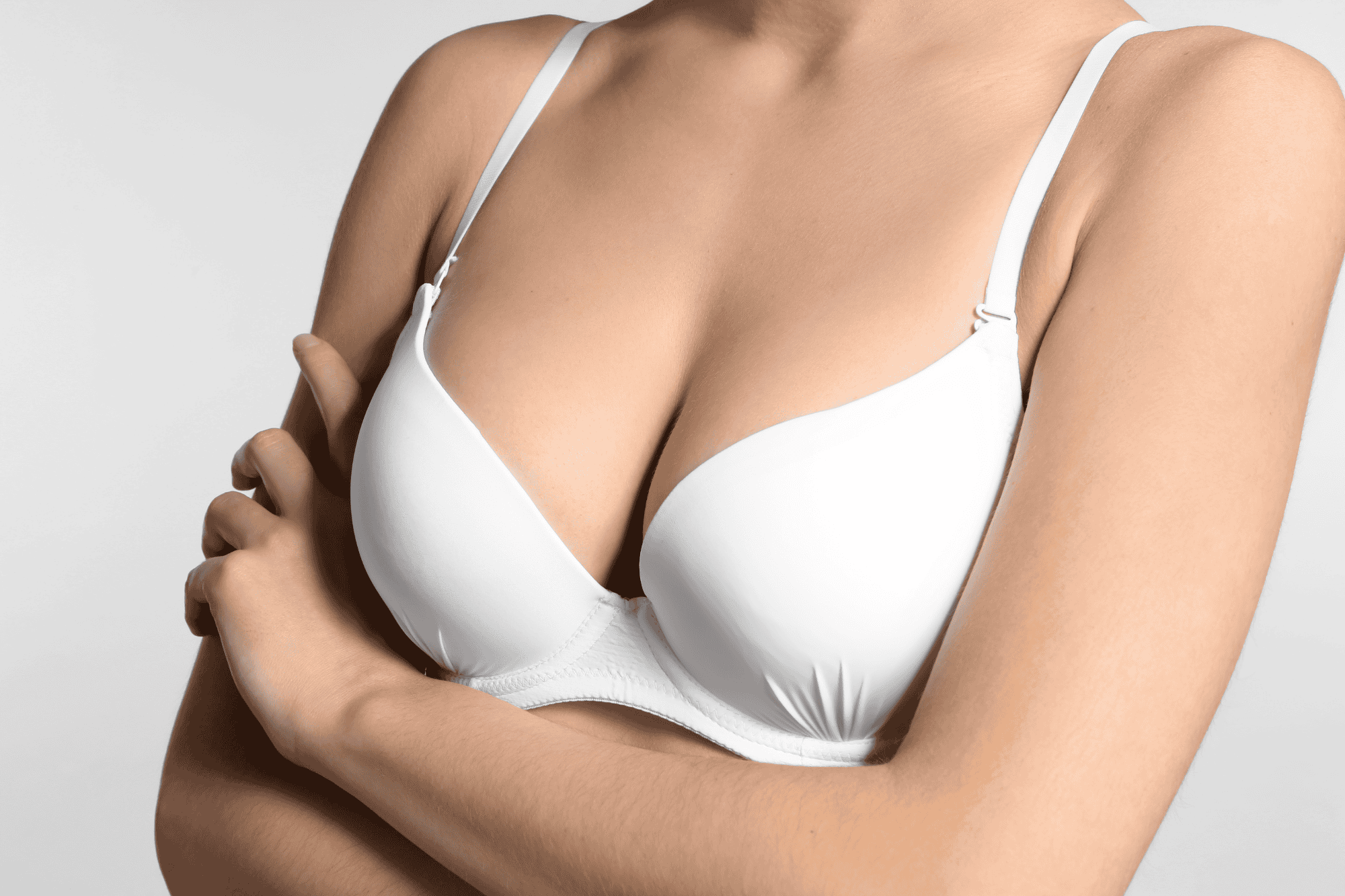When considering breast enhancement, many women automatically think of breast implants. However, if your concerns center around sagging, drooping, or loss of shape rather than size, a breast lift may be the solution you need. A breast lift does not involve implants at all. Rather, the surgeon manipulates the existing breast tissue in order to lift and tighten the breast.
Understanding the difference between these procedures can help you make the right choice for your goals. If you’re exploring options for breast lift, recognizing these five key signs can guide you toward the procedure that will best address your concerns and restore your confidence.
Understanding the Difference: Breast Lift vs. Implants
Before diving into the signs, it’s important to understand what each procedure accomplishes. Breast implants will make the breasts larger and a lift will improve the shape of the breasts. Breast implants involve surgically placing silicone or saline implants to increase breast size. In contrast, breast lifts don’t use implants. Instead, they remove excess skin and tighten breast tissue to lift and firm the breasts.
A breast lift results in a higher, firmer and shapelier breast. Skin appears tighter all around the breast, with the breast itself sagging less and protruding from the chest wall more. The key is identifying whether your primary concern is size or position and shape.
Sign #1: Your Nipples Point Downward or Fall Below the Breast Fold
One of the most telling signs you need a breast lift is the position of your nipples. The nipple of the breast may also tend to point downward. As the breasts sag, the position of the nipple may also change. In some cases, the nipples may point downward or may sit lower on the breast.
Medical professionals use a simple assessment to determine the degree of sagging. An initial at-home test you can do to determine if you’re a potential candidate for a breast lift is the pencil test. Simply place a pencil as high as you can under your breast fold. If the pencil holds, then you have signs of breast drooping. Additionally, if your nipple falls below the pencil, then you have significant ptosis, and more than likely are a great candidate for a breast lift.
This downward positioning occurs because the nipple-areola complex tends to move lower on the breast relative to the inframammary crease. When your nipples point downward or sit below the natural breast fold, implants alone cannot correct this positioning issue.
Sign #2: You Experience Loss of Upper Breast Fullness
When breasts sag, they may appear to be lacking fullness in the upper portion. This is because the tissues that support the breasts, including the ligaments and skin, gradually weaken over time, causing the breasts to droop. As a result, the breast tissue may redistribute, leading to a loss of volume in the upper part of the breasts.
This redistribution creates what many describe as a “deflated” appearance in the upper breast area. The breast tissue sits low off the chest, causing a deflated, sagging look. You might notice that your breasts appear hollow or empty at the top, even if you haven’t lost significant weight.
However, it will not increase the fullness of the top of your breasts or increase your cup size – something only implants can do. While implants can add volume, they cannot address the fundamental issue of tissue that has shifted downward due to gravity and time.
Sign #3: Your Breasts Have Changed Shape After Pregnancy or Weight Loss
Life changes often trigger the need for a breast lift rather than implants. Women who have had children often benefit the most from this combined procedure because of the significant changes their bodies undergo during and after pregnancy. It’s common for mothers to experience a loss of shape and volume after giving birth and breastfeeding, making such women who want to increase the fullness and perkiness of their breasts excellent candidates for a lift plus augmentation.
If a woman has been pregnant, hormonal changes during the postpartum period will cause her depleted milk glands to atrophy. Breast tissue and suspensory ligaments may also be stretched if the woman is overweight or loses and gains weight. When these factors are at play, the breast prolapses, or falls forward.
Similarly, significant weight loss can leave you with excess skin that hangs loosely around your breast tissue. Ptosis can also occur when parenchymal volume decreases (eg, after significant weight loss) and relative skin redundancy ensues. In these cases, adding implants without addressing the excess skin and positioning would not achieve the lifted appearance you desire.
Sign #4: You Feel Discomfort or Notice Skin Issues
Physical discomfort can be another indicator that you need a breast lift. Some women also have neck, shoulder or back pain, as the weight pulls downward, particularly those with larger breasts. Others might experience skin irritation, redness or rashes underneath the breasts from friction and excess moisture.
Women with sagging breasts may experience discomfort when wearing a bra. The bra may not fit properly, causing pain or discomfort because of sagginess. When your breasts hang lower on your chest wall, finding properly fitting undergarments becomes challenging, and you may notice that even well-fitted bras don’t provide the support and comfort you need.
When a woman with sagging breasts stands, the underside or inferior skin of the breast folds over the infra-mammary fold and lies against the chest wall. This folding can create areas where moisture and bacteria can accumulate, leading to skin irritation and rashes that require medical attention.
Sign #5: Your Breast Tissue Hangs Below the Natural Breast Crease
The final and perhaps most obvious sign is when your breast tissue visibly hangs below your natural breast crease. As most women age, breasts naturally yield to gravity and tend to sag and fold over the inframammary crease, the lower attachment point to the chest wall. This is more true for larger-breasted women.
Here are the signs that your breasts might be losing their natural lift: Breasts hang lower on the chest wall. Medical professionals classify this sagging using specific grades. Grade II: Moderate ptosis—The nipple is located below the infra-mammary fold but higher than most of the breast tissue hangs. Grade III: Advanced ptosis—The nipple is below the inframammary fold and at the level of maximum breast projection.
When your breast tissue consistently hangs below the natural crease, implants alone cannot lift this tissue back to its youthful position. Implants will not, however, address the overall sag of the breast shape if that is a main concern, which naturally leads to a follow up question.
When to Consider Combining Procedures
In some cases, you may benefit from both procedures. It is becoming increasingly popular for women to combine breast augmentation with a breast lift procedure. Often a breast lift is done in conjunction with breast augmentation so that the breasts can be restored to a more youthful position and a volume increase is added with the use of an implant. Having a breast augmentation with a lift, which is called an augmentation/pexy, will give you some upper breast fullness along with repositioning sagging breasts and nipple areas.
Your consultation will help determine whether you need one procedure or both. If you are dissatisfied with the positioning or sagging of your breasts, a breast lift surgery may be the suitable option for you. However, if you are content with the position of your breasts but desire increased size, breast implant surgery might be a favorable choice.
The Consultation Process
During your consultation for breast lift, your surgeon will evaluate several factors to determine the best approach for your goals. The initial preoperative evaluation should focus on determining the patient’s goals, identifying significant medical and surgical history, and assessing breast anatomy. These factors will help the patient and surgeon navigate the various surgical options. The patient’s expectations and goals translate into what the patient wishes to change, namely, breast shape, size, or both.
Your surgeon will assess the degree of ptosis, skin quality, breast volume, and your overall health to create a personalized treatment plan. Ultimately a consultation with a board-certified plastic surgeon who specializes in aesthetic breast surgery is needed to determine what procedure aligns with your goals.
What to Expect from Breast Lift Results
Understanding what a breast lift can achieve helps set realistic expectations. A breast lift, also known as mastopexy, raises the breasts by removing excess skin and tightening the surrounding tissue to create a more youthful breast contour. The results of your breast lift surgery are immediately visible. Over time, post-surgical swelling will resolve and incision lines will fade.
While a breast lift can create a fuller and more youthful breast shape, it does not increase overall breast size. If you would like larger breasts, a breast augmentation with implants combined with a lift may be more suitable.
The results of your breast lift surgery will be long-lasting. Over time, your breasts can continue to change due to aging and gravity. However, while breast lift results are long-lasting, factors like aging, weight fluctuations, and lifestyle choices can affect their longevity. Maintaining a healthy lifestyle and stable weight can help prolong the outcome.
Making Your Decision
The choice between breast implants and a lift boils down to your specific goals. If your primary concern is volume enhancement or achieving a particular cup size, breast implants may be the preferred option. On the other hand, if you’re more focused on addressing sagging and achieving a lifted, perkier look without necessarily increasing size, a breast lift may be the more suitable choice.
If you recognize these signs in your own experience, consider scheduling a consultation to discuss your options. A plastic surgeon can recommend treating sagging breasts based on your breast shape, skin elasticity and personal goals. If sagging breasts are compromising your comfort level, posture or self-esteem, a specialist can help you determine the appropriate course of action.
Remember, the most important thing to know is that it’s completely natural to experience some degree of sagging as your breasts change over time. The decision to pursue any breast procedure should be based on your personal goals and how you feel about your body.
Frequently Asked Questions
How do I know if I need a breast lift instead of implants?
The primary indicators include nipples that point downward or fall below the breast fold, loss of upper breast fullness, excess skin after pregnancy or weight loss, physical discomfort from sagging, and breast tissue that hangs below the natural crease. If your nipple falls below the pencil, then you have significant ptosis, and more than likely are a great candidate for a breast lift. A consultation with a board-certified plastic surgeon can provide a definitive assessment based on your individual anatomy and goals.
Can I get both a breast lift and implants at the same time?
Yes, many women benefit from combining both procedures. Often a breast lift is done in conjunction with breast augmentation so that the breasts can be restored to a more youthful position and a volume increase is added with the use of an implant. Having a breast augmentation with a lift will give you some upper breast fullness along with repositioning sagging breasts and nipple areas. Your surgeon will determine if you’re a good candidate for the combined approach based on your anatomy and desired outcomes.
Will a breast lift affect my ability to breastfeed in the future?
In most cases, mastopexy should not impact your ability to breastfeed. I take care to preserve the milk ducts and nipples during the procedure. Discuss your future breastfeeding plans with your surgeon during your consultation so they can plan the procedure accordingly and help you understand any potential risks specific to your situation.
If you’re experiencing any of these signs and considering your options for breast lift, contact us today to schedule your consultation. Our experienced team can help you determine the best approach to achieve your aesthetic goals and restore your confidence.
Disclaimer: This article is for informational purposes only and does not constitute medical advice. Please consult a healthcare professional for personalized guidance.




